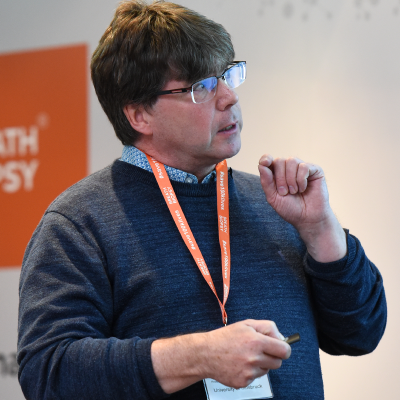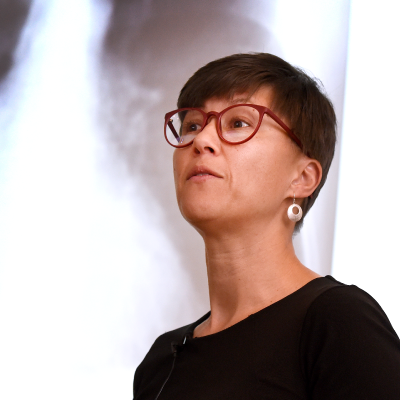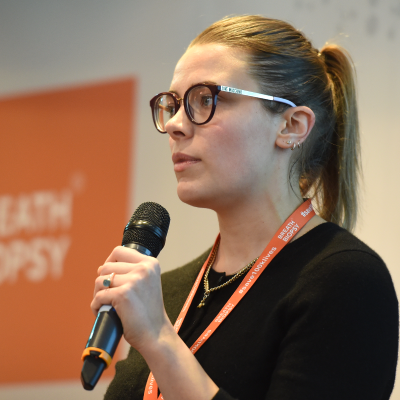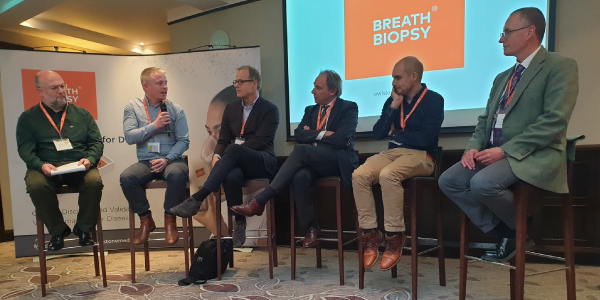Towards collaboration and validation in breath research
Published on: 2 Dec 2019
We need to work together on larger trials and take advantage of the opportunities presented by targeted biomarker analysis. These are the key messages that emerged from the expert presentations and discussions at this year’s Breath Biopsy Conference. Taking place for the second time, the 2019 conference saw over 100 leaders in the breath research field and related areas coming together in Cambridge to discuss the latest advances and to drive progress in understanding breath biomarkers and advancing breath tests into clinical application.
Particular highlights from the program included keynote lectures from Jane Hill (Thayer School of Engineering, Dartmouth), Jessica Lasky-Su (Brigham & Women’s Hospital, Boston) and George Hanna (Imperial College London); A session on targeted stable isotope and exogenous VOC breath tests; and an enthusiastic and enlightening discussion session looking at predictions for the next five years in the field.

Chris Mayhew, Director of the Institute of Breath Research, University of Innsbruck, led the call for more cooperation within the breath community. He highlighted the abundance of small-scale discovery studies in the breath research field arguing that, despite decades of work, few proposed biomarkers have been thoroughly assessed and validated in larger-studies. Although technology has partly limited advancement, now is the time for groups around the world to come together to really make progress in demonstrating robust biomarkers for various diseases. In his presentation, which started off in the depths of space, Prof Mayhew reviewed the variety of chemical analysis tools that have been applied in the breath field and concluded that the study of endogenous breath biomarkers has yet to produce quality results, raising exogenous probes as a powerful alternative. In particular, he examined the use of probes and breath testing for liver disease, where bad breath (fetor hepaticus) is a long-standing diagnostic tool.


One of the most exciting advances in validated breath biomarkers this year came in the form of a paper by Schleich et al. which we wrote about earlier in the year. Using patient cohorts in Liege, Belgium, the team identified biomarkers for differentiating asthma phenotypes and validated them using an independent patient cohort. This paper represents an important step forward for the breath research field and it was fantastic to hear from Renaud Louis about the medical implementation of this breakthrough work.

As the final Keynote speaker at this year’s conference, George Hanna, reinforced the need for validation of results in his discussion of the challenges for clinical validation studies. He shared meta-analysis figures demonstrating the quality of results that can be attained through exhaled breath analysis and illustrated the wide range of parallel biomarker discovery studies that have been performed. Beyond variation in methodology and lack of validation, he also explored the clinical, patient and environmental confounding factors that impact breath studies. Many of the challenges identified in this talk have previously been discussed in our blog post on challenges in breath research.

As the event hosts, we at Owlstone Medical are excited to see all of the ongoing work being done in the breath research field. We enjoyed sharing our updated Breath Biopsy products with attendees and getting feedback on the updated designs. We’re grateful to everyone from the breath research community for taking part and we’d like to thank our sponsors Thermo Scientific, Markes International, SepSolve Analytical and LECO for making this year’s event possible. The posters, presentations and abstracts from this year’s conference are available online.

